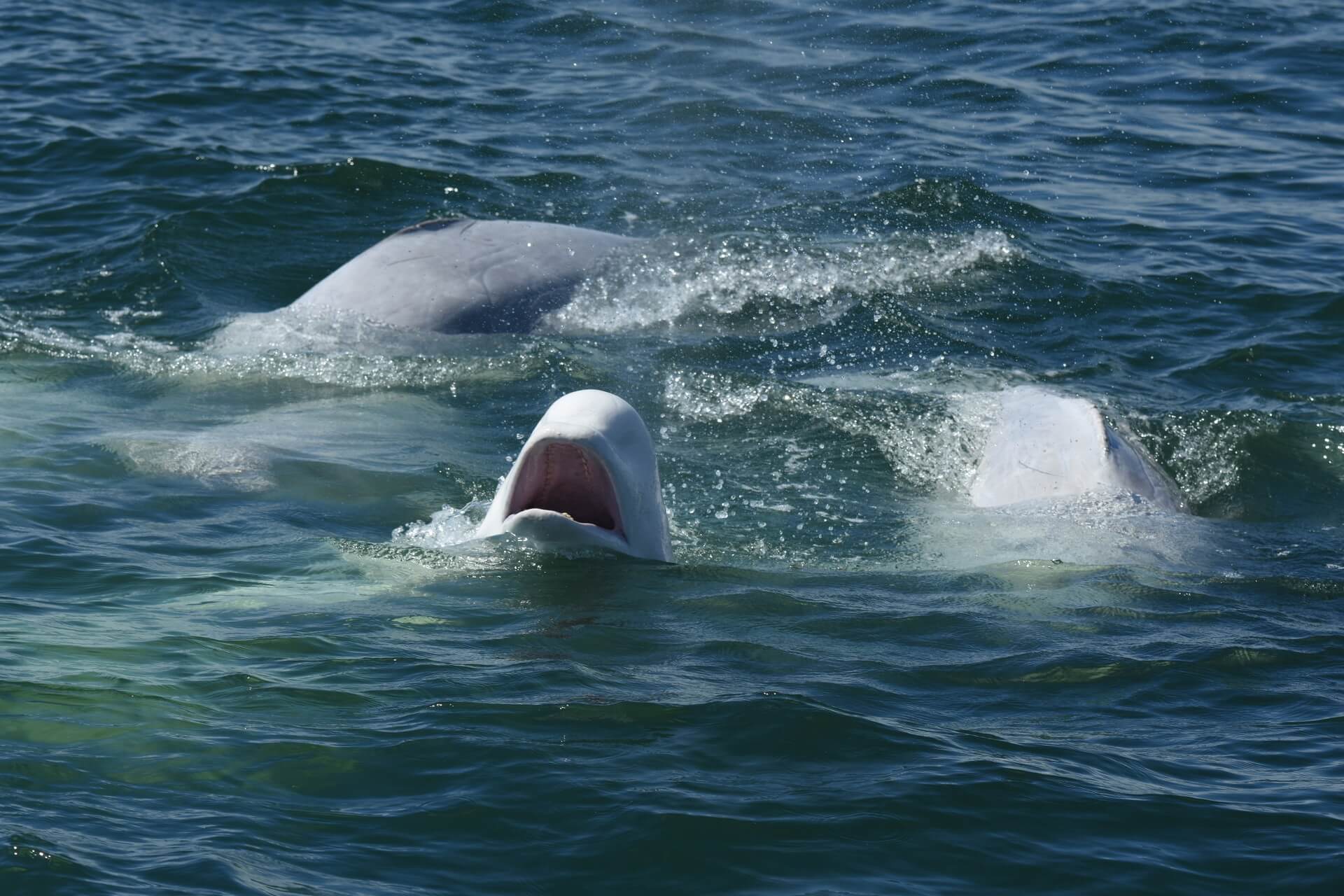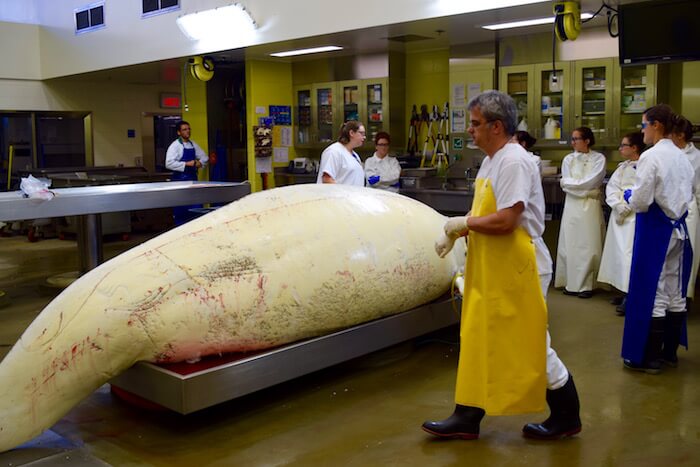It may seem surprising, but up until a few months ago, the diet of the St. Lawrence beluga was not well known. “Most of what we know about the beluga’s diet in the St. Lawrence Estuary comes from stomach contents collected 80 years ago, mainly from a hunting site that is no longer used by belugas,” points out Fisheries and Oceans Canada researcher Véronique Lesage in a scientific study published in July.
Top secret menu
Updating this knowledge is not as straightforward as it might seem. Like any cetacean, the beluga is difficult to track during dives and documenting its feeding sequences in the murky waters of the St. Lawrence or Saguenay is challenging. And, other than a few rare occasions when prey is seen in a surfacing beluga’s mouth, these animals show little of their menu. Scientists must therefore rely primarily on the stomach and intestinal contents of dead animals.
As beluga hunting has been banned since the late 1970s, today it is carcasses that are found in sufficiently fresh condition that are used. For this most recent study, the research team was able to analyze the digestive content of 79 beluga carcasses collected between 2003 and 2017, as well as a dozen or so other older carcasses, all having undergone necropsies by the Université de Montréal’s faculty of Veterinary Medicine.
Unfortunately, this method, which relies on the harder components of the prey (bones, beaks, etc.) recovered in the digestive system – when it is not empty! – has its biases. “Although these samples are not suitable for a quantitative evaluation of diet, they are invaluable for identifying current prey species in order to compare them to the past,” emphasizes Véronique Lesage.In other words, one can determine the type of prey present in the beluga’s diet, but not the amount ingested.
Cod, hake, redfish, worms and squid
Results show that the St. Lawrence beluga has a varied diet that consists of fish and invertebrates generally measuring less than 30 cm. The most frequently found prey are bottom-dwelling fish such as cod, hake and redfish, as well as polychaetes (bristle worms) and small cephalopods such as squid. Other fish including smelt or eel are occasionally found, as are marine invertebrates (shrimp, gastropods, etc.).
These conclusions differ somewhat compared to previous knowledge. In the 1930s, the prey most commonly found in beluga stomachs were sand lance and capelin, fish that are still found in their diet today, but less frequently.
“Redfish, American eel and two species of hake [are] present in the contemporary beluga diet, but were not detected [in the past]. The opposite has been observed for Atlantic salmon, Atlantic sturgeon, sea lamprey, haddock and rays,” reports the recent study.
Variable diets
Analyzing the stomach contents in beluga carcasses also makes it possible to note seasonal variations, as well as differences in diet between males and females, particularly in summer: “Sand lance as well as eel, rainbow smelt and Atlantic herring were detected in the beluga diet exclusively in late summer and fall, while other species […] were detected in spring or fall,” writes Véronique Lesage. These variations are attributed to the seasonal availability of prey as well as the movements of belugas.
It is known that male and female belugas use the multiple habitats of the St. Lawrence differently. Logically, this gender segregation leads to differences in diet. For example, fish living near the sea floor are present year round in the stomachs of males, but appear to make up part of the females’ diet only in spring and fall.
Why is it so important to know what belugas eat?
Understanding the diet of St. Lawrence belugas may seem trivial, but having a better idea of what they feed on is useful for better protecting them. For example, one can identify a possible source of toxic substances. Researchers can also distinguish which species and which habitats are the most important for the species and thus initiate targeted conservation actions. Lastly, understanding seasonal food cycles and their evolution over time is essential to predict and mitigate the potential impacts of human activity and climate on this endangered population.









